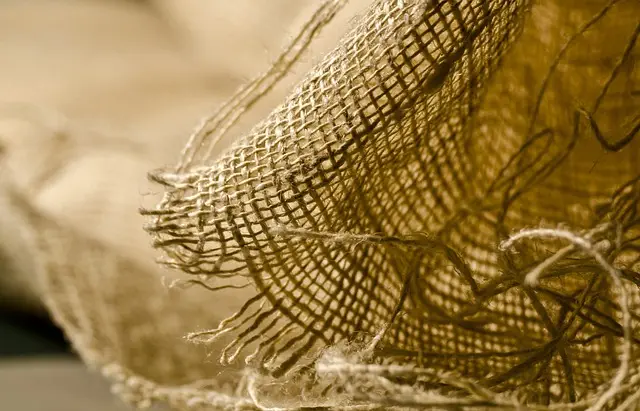Muscle soreness, particularly delayed onset muscle soreness (DOMS), occurs due to microscopic tears in muscle fibers and the subsequent inflammation following intense physical activity. For natural pain relief, kratom strains such as Red Bali Kratom and Maeng Da Kratom are often considered, with each offering distinct analgesic properties. Red Bali Kratom is known for its calming effects and gentle approach to pain management, making it suitable for mild to moderate soreness. In contrast, Maeng Da Kratom has a higher alkaloid content and is reported to provide more potent pain-relieving effects, which can be beneficial for acute soreness. The choice between Red Bali and Maeng Da should be based on individual needs, as factors like personal tolerance, the nature of muscle pain, and sensory preferences play a significant role in their effectiveness. Both strains contain mitragynine and 7-hydroxymitragynine but differ in their alkaloid profiles and overall impact on the user. Users should start with conservative dosages to understand their response and adjust as necessary, ideally under the guidance of a healthcare professional. When selecting between Red Bali Kratom and Maeng Da for muscle soreness management, personal experimentation is key to determining the most effective strain for one's specific situation.
muscle soreness can be a debilitating challenge for individuals engaging in regular physical activity or those recovering from injury. Seeking natural alternatives for relief, many turn to kratom, a botanical supplement with varied effects. This article delves into the potential of kratom strains, particularly Red Bali Kratom and Maeng Da Kratom, as remedies for muscle soreness. We’ll compare their distinct properties and explore how each might offer relief from pain. Understanding the mechanisms behind muscle soreness and the unique role kratom plays will provide readers with a comprehensive overview of these strains and their comparative effects in alleviating discomfort. Join us as we navigate the intricacies of Red Bali Kratom versus Maeng Da Kratom for muscle soreness relief.
- Understanding Muscle Soreness and the Role of Kratom: Exploring the Distinctions Between Red Bali and Maeng Da Strains
- Assessing Red Bali Kratom's Approach to Alleviating Muscle Soreness
- The Potential of Maeng Da Kratom for Muscle Soreness Relief: A Comparative Analysis with Red Bali
Understanding Muscle Soreness and the Role of Kratom: Exploring the Distinctions Between Red Bali and Maeng Da Strains

Muscle soreness, a common experience following intense physical activity or exercise, can range from mild discomfort to severe pain that impedes daily functions and activities. This soreness, often referred to as delayed onset muscle soreness (DOMS), is typically the result of microscopic tears in the muscle fibers that occur when engaged in unfamiliar exercises or overexertion. The body’s natural response to these micro-tears is inflammation, which can lead to pain and tenderness. Various remedies are available to alleviate this discomfort, with some individuals turning to natural alternatives like kratom for its potential analgesic properties.
Kratom, a tropical evergreen tree native to Southeast Asia, has gained attention in alternative medicine circles for its diverse effects on the body, including pain relief. Among the many strains of kratom, Red Bali Kratom and Maeng Da are particularly popular for their pain-relieving qualities. Red Bali Kratom is known for its calming effects and gentle approach to pain management, making it a preferred choice for those seeking relief from muscle soreness without overwhelming stimulation or sedation. On the other hand, Maeng Da Kratom is celebrated for its strong analgesic properties, which are believed to be due to its higher concentration of alkaloids, the active compounds in kratom leaves. Users often report that Maeng Da offers a more potent pain-relieving effect than Red Bali, which can be particularly beneficial for acute soreness. Both strains have unique alkaloid profiles and are processed differently, influencing their effects. When considering the use of kratom for muscle soreness relief, understanding these distinctions between Red Bali and Maeng Da strains is crucial for identifying which type may best suit an individual’s specific needs and pain levels.
Assessing Red Bali Kratom's Approach to Alleviating Muscle Soreness

Red Bali Kratom has garnered attention in natural pain management circles, particularly for its potential role in alleviating muscle soreness. This particular strain is known for its balanced alkaloid profile, which may contribute to a comprehensive approach to pain relief. Users often report that Red Bali Kratom helps in managing the discomfort associated with intense physical activity or chronic muscle tension. The alkaloids present in Red Bali, such as 7-hydroxymitragynine and mitragynine, are believed to interact with the body’s opioid receptors, which can lead to analgesic effects. This makes it a viable alternative for individuals seeking relief from muscle soreness without the side effects commonly associated with prescription painkillers.
When comparing Red Bali Kratom to Maeng Da, another popular kratom strain, it’s important to note the differences in their effects and potency. Maeng Da is often regarded as one of the most potent kratom strains available. It has a higher alkaloid content than Red Bali, which may translate to more pronounced effects. Both strains are used for muscle pain relief, but users might prefer one over the other based on their unique alkaloid concentrations and resulting sensory experiences. For those looking to manage muscle soreness, it’s crucial to consider personal tolerance, the severity of pain, and individual preferences when choosing between Red Bali Kratom and Maeng Da. Proper dosing is also essential for maximizing benefits while minimizing potential adverse effects. Users should always start with a lower dose to assess their body’s response before considering adjustments.
The Potential of Maeng Da Kratom for Muscle Soreness Relief: A Comparative Analysis with Red Bali

Maeng Da Kratom has long been recognized in traditional practices for its potential benefits, including relief from muscle soreness. This particular strain is known for its robust and invigorating effects, which are attributed to the high concentrations of alkaloids it contains, such as mitragynine and 7-hydroxymitragynine. Users often report a sense of well-being alongside pain relief, making it a compelling option for those seeking muscle soreness relief. When compared with Red Bali Kratom, Maeng Da is said to offer a more stimulating and focused effect, which can be beneficial for individuals who require sustained energy during physical activities or those who experience fatigue-related muscle discomfort.
Red Bali Kratom, on the other hand, is another popular strain that has gained acclaim for its analgesic properties, which can help alleviate muscle pain and soreness. Its effects are typically more sedating and soothing, providing a relaxing sensation that may be preferable after strenuous exercise or for those who have difficulty sleeping due to discomfort. The alkaloid profile of Red Bali is similar to Maeng Da but with a different balance that can lead to a more calming experience. When consumers compare Red Bali Kratom vs Maeng Da, the choice often comes down to the desired level of stimulation and the specific nature of the muscle soreness being addressed. Both strains offer unique advantages; however, individuals may prefer one over the other based on their individual needs and sensitivities. It is important for users to experiment with dosages and strain varieties to determine what works best for them, as personal tolerance and the intensity of muscle soreness can vary greatly.
Muscle soreness can be a significant hindrance to an active lifestyle, but natural remedies like kratom offer promising alternatives for relief. This article has delved into the mechanisms of muscle soreness and how kratom, particularly the Red Bali and Maeng Da strains, may provide effective relief. The distinct alkaloid profiles of these strains were examined, highlighting the potential of both in managing post-exercise discomfort. While Red Bali kratom is appreciated for its soothing effects that may help alleviate muscle soreness, Maeng Da kratom presents a comparative advantage with its energizing and analgesic properties. For individuals seeking natural solutions to muscle pain, considering the benefits of these kratom strains in conjunction with proper exercise regimens and rest can be a valuable approach. As research continues, understanding red Bali Kratom vs Maeng Da kratom’s effects on muscle soreness will become increasingly clear, potentially paving the way for better-informed choices in natural pain management.






